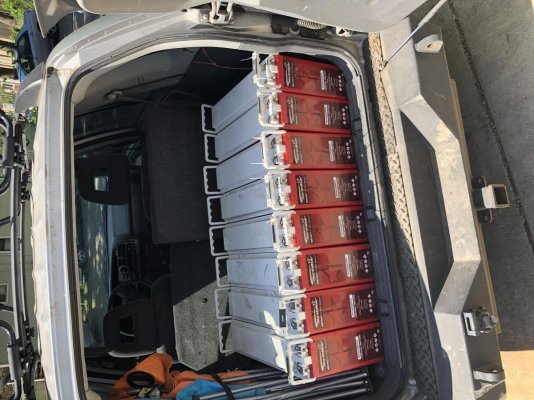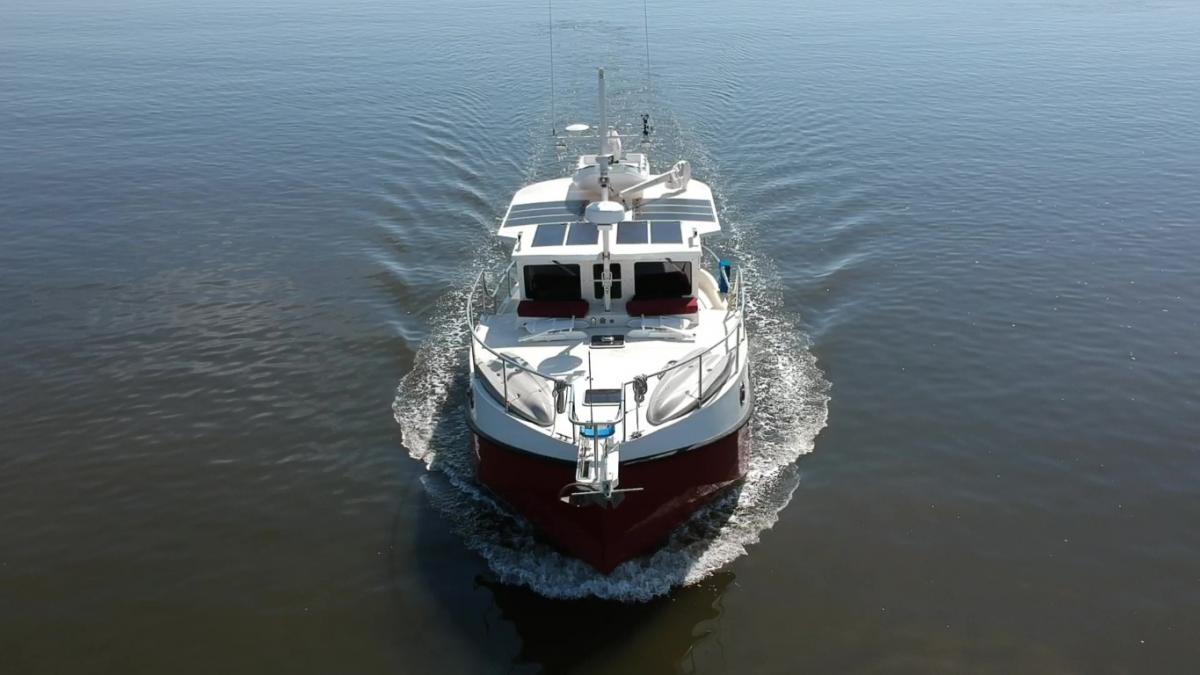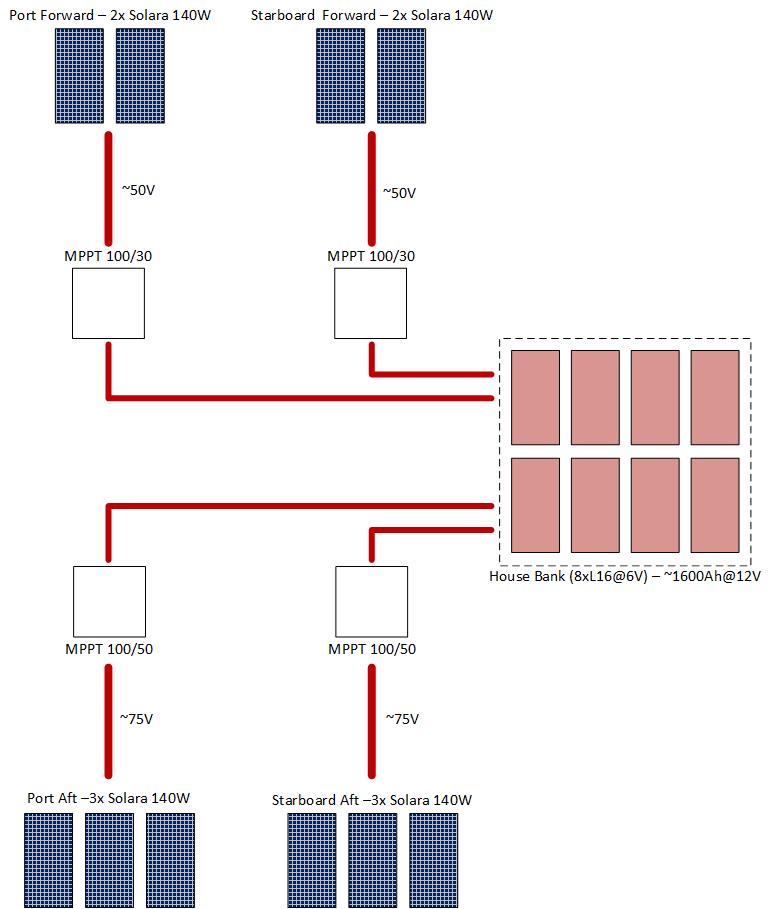Sea Word
Senior Member
I’m designing a power system from the ground up. It will be a little non typical in a few ways. Mainly that I don’t want to ever use shore power OR generator. It will be 100% solar run, hopefully, and I’m trying to get a feel for what people actually need for AH capacity on their boats. Also, I see some people use an 8D for a starting battery. Why the heck would anyone use such a large batt for starting? Seems overkill for dedicated engine batt. Anyway, here’s the equipment list:
Typical systems for a 40’ live aboard regarding lights, fans, iPads, water pumps etc.
Diesel furnace and water heaters, we may even use the boiler for some sort of improvised hot tub
Dorm fridge, and possibly a chest freezer too for long trips.
All the above (except the water heater and furnace) will be powered by a full time inverter on AC. The inverter has a 1w idle current draw.
Roof solar: I’m fitting 1200w panels.
SO, how much AH storage would be a good goal? I’m thinking that I’ll try to use sealed lead acid, running at 24v bank. My initial thinking is that around 400ah@24v would be enough for us and allow rom for bank degradation in coming seasons, but I also don’t want to go below 50% DOD, so that’s really only an effective capacity of 200ah, and if you figure 24% degradation over a few years now we are down to 150ah usable and that feels a little light to me. Should I just bite the bullet and up the capacity from the start or ? We have plenty of room in the engine room, so that’s not a worry.
Typical systems for a 40’ live aboard regarding lights, fans, iPads, water pumps etc.
Diesel furnace and water heaters, we may even use the boiler for some sort of improvised hot tub
Dorm fridge, and possibly a chest freezer too for long trips.
All the above (except the water heater and furnace) will be powered by a full time inverter on AC. The inverter has a 1w idle current draw.
Roof solar: I’m fitting 1200w panels.
SO, how much AH storage would be a good goal? I’m thinking that I’ll try to use sealed lead acid, running at 24v bank. My initial thinking is that around 400ah@24v would be enough for us and allow rom for bank degradation in coming seasons, but I also don’t want to go below 50% DOD, so that’s really only an effective capacity of 200ah, and if you figure 24% degradation over a few years now we are down to 150ah usable and that feels a little light to me. Should I just bite the bullet and up the capacity from the start or ? We have plenty of room in the engine room, so that’s not a worry.





